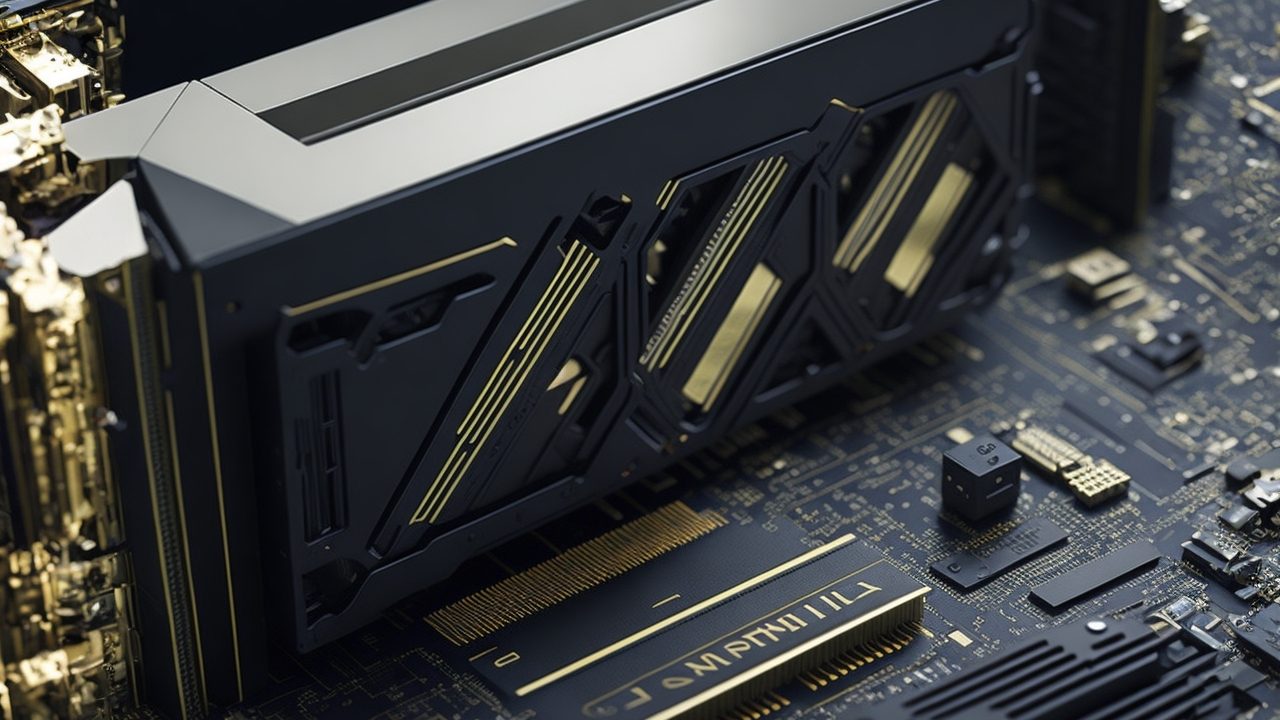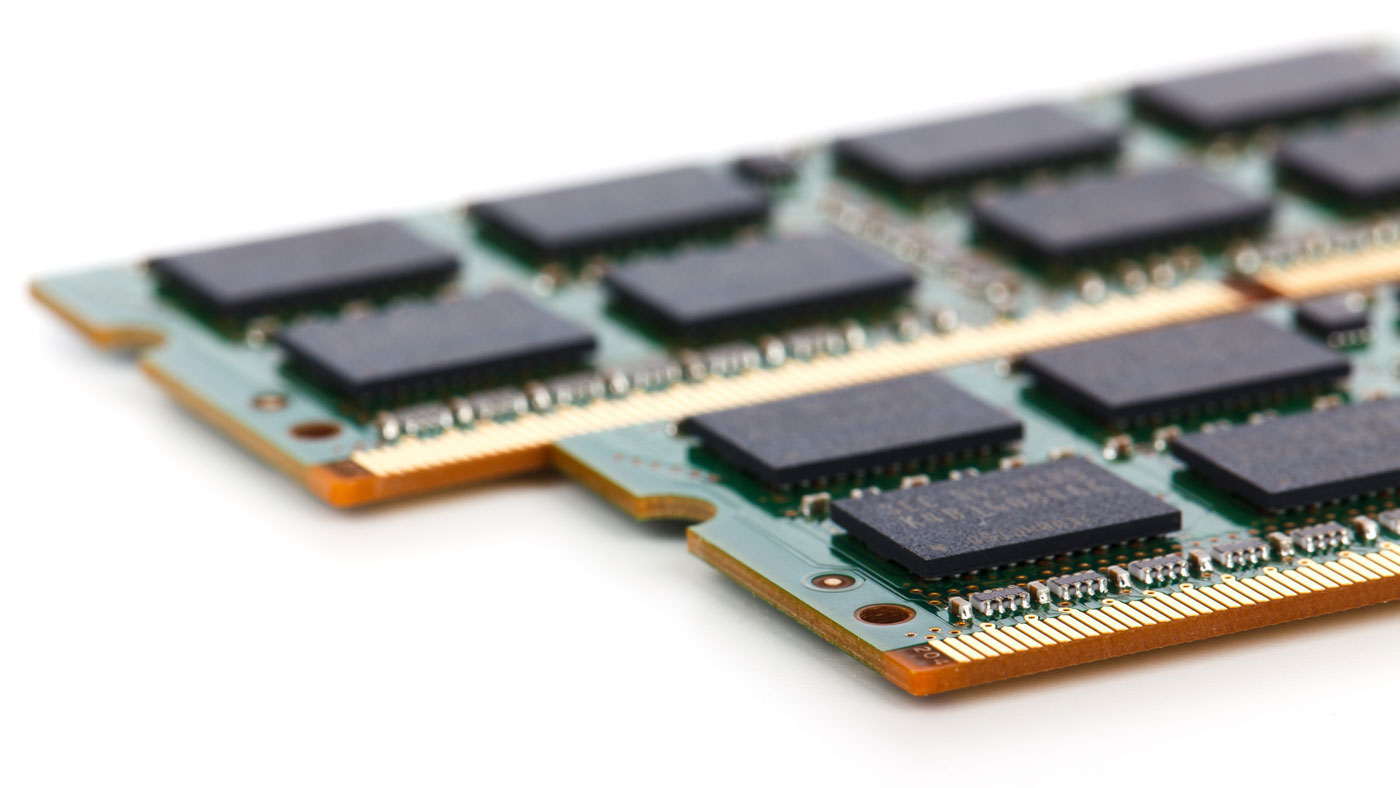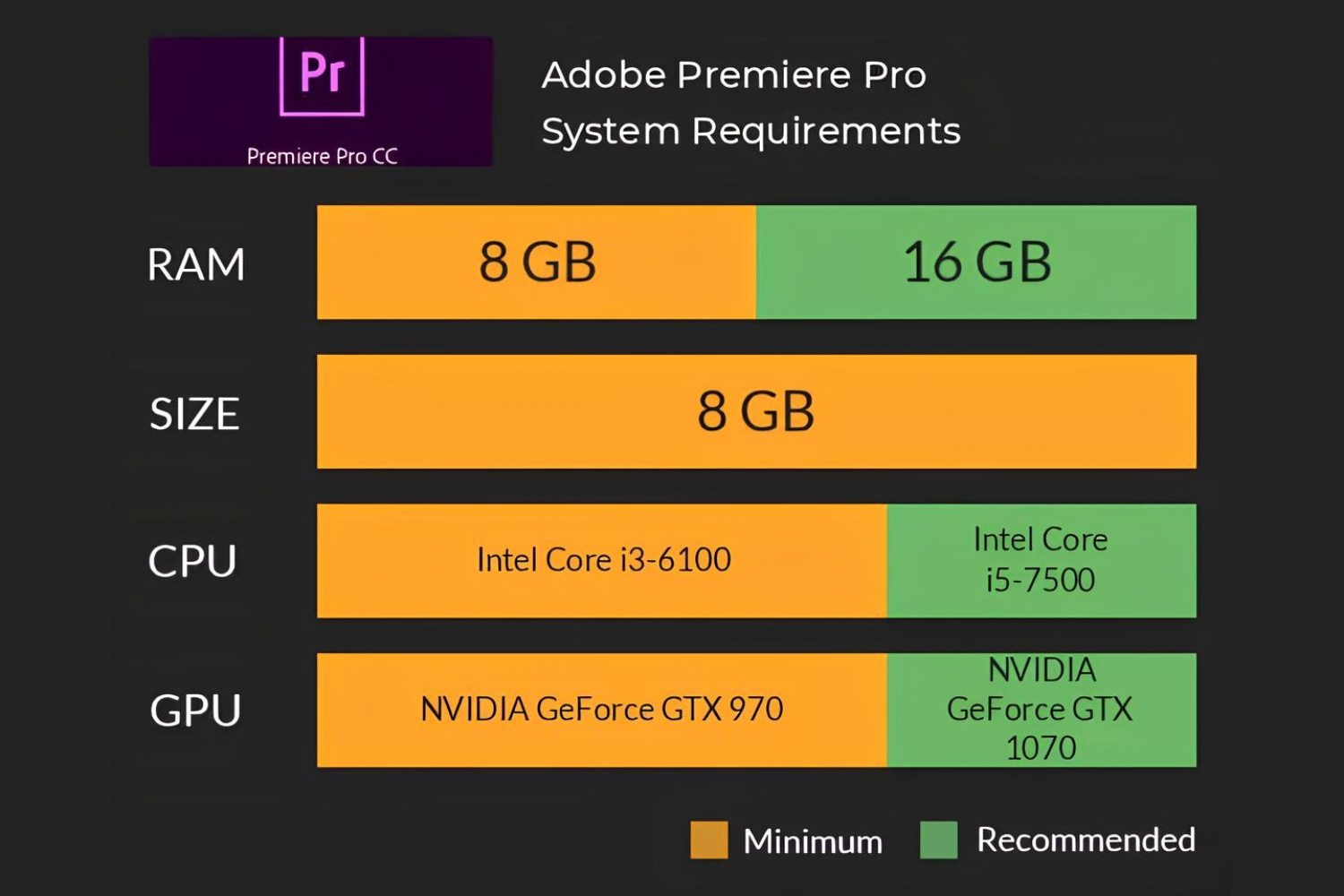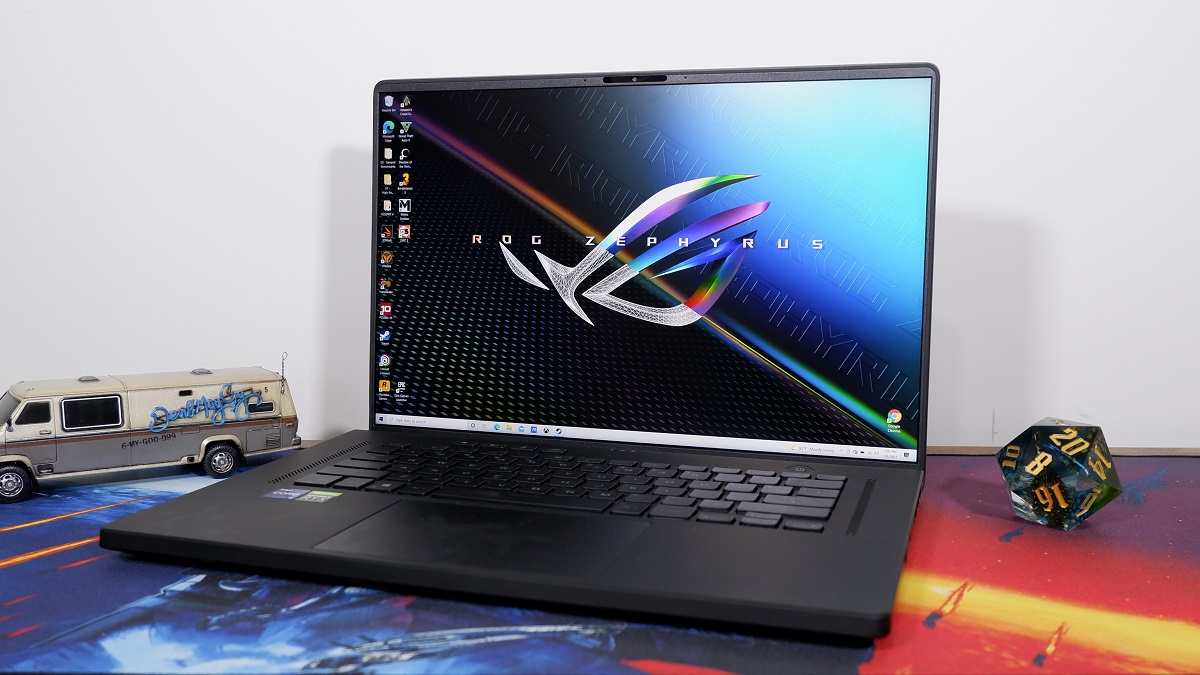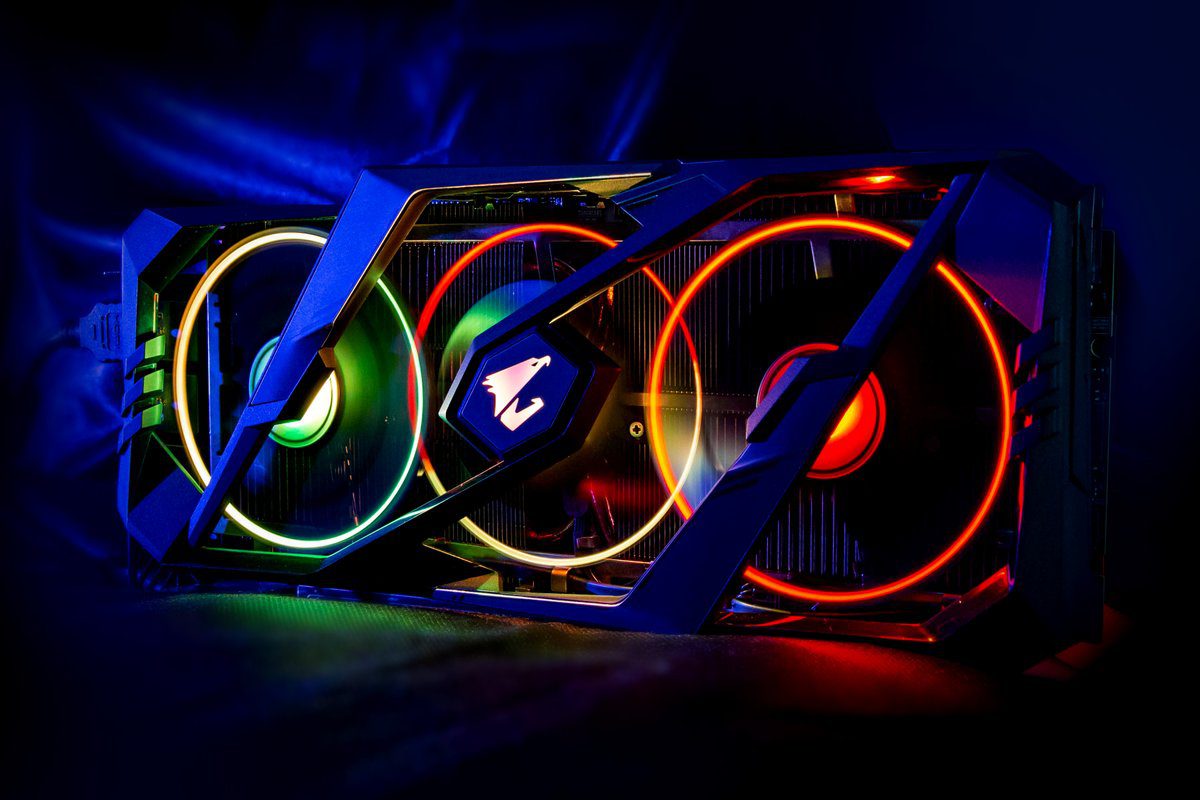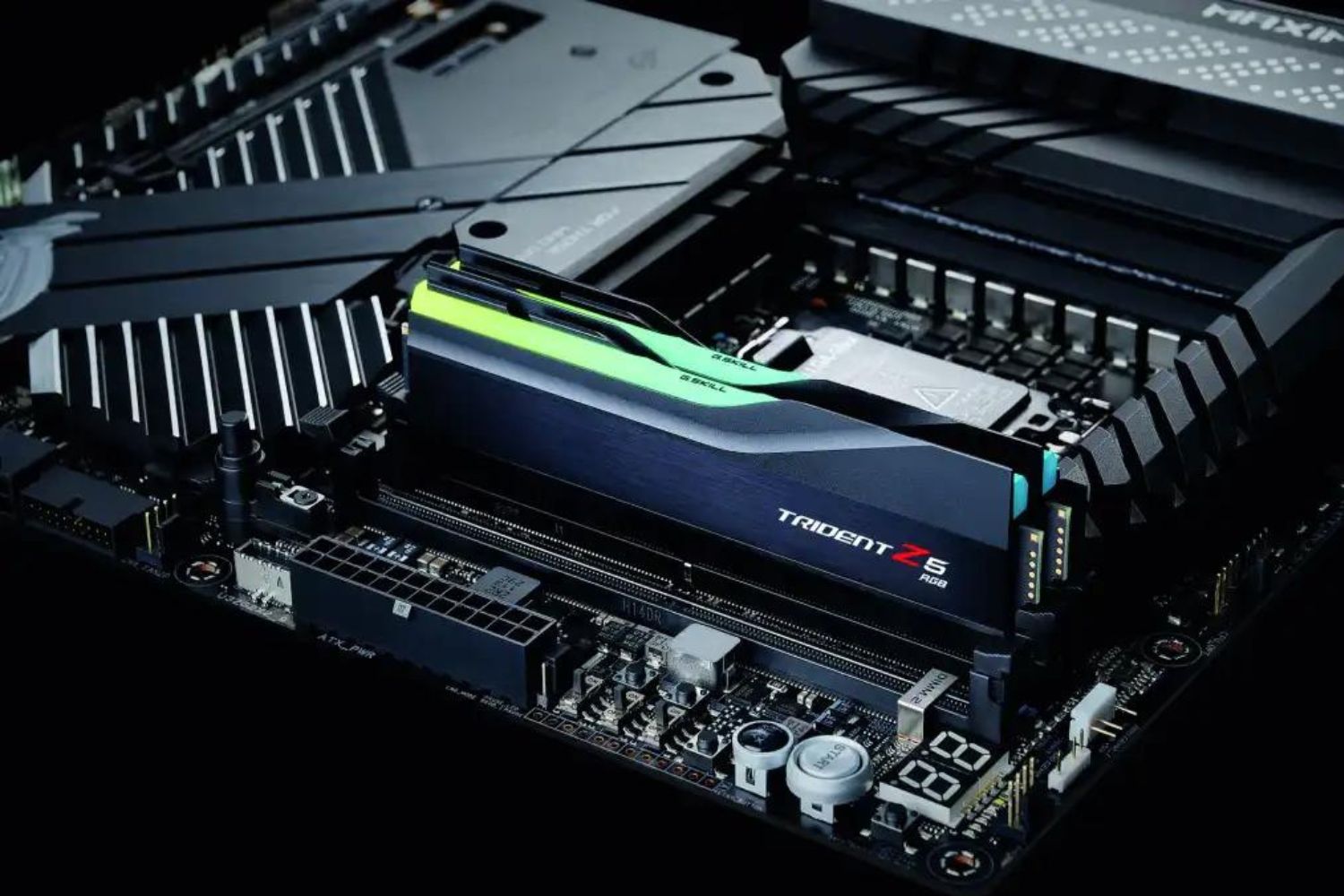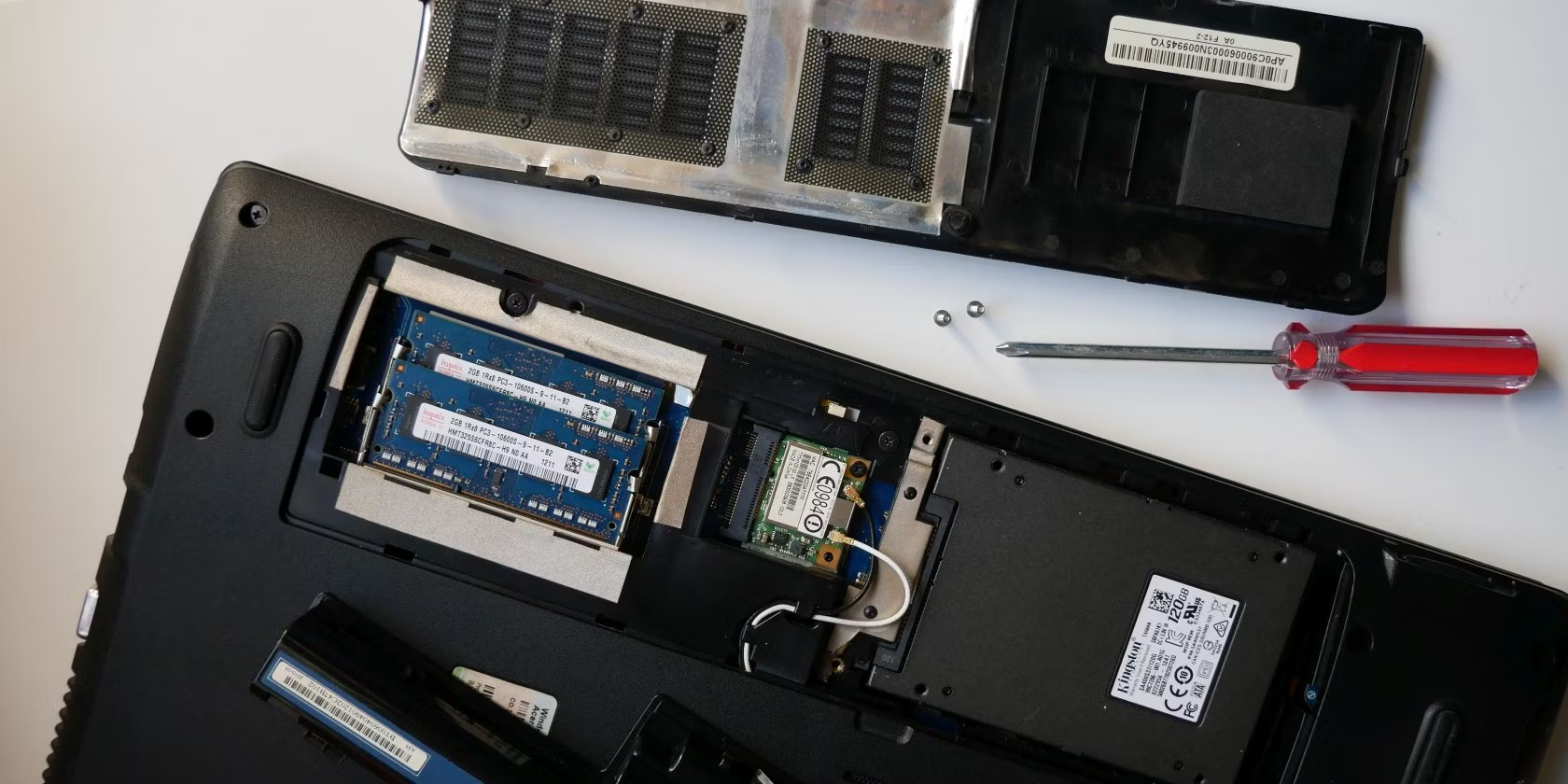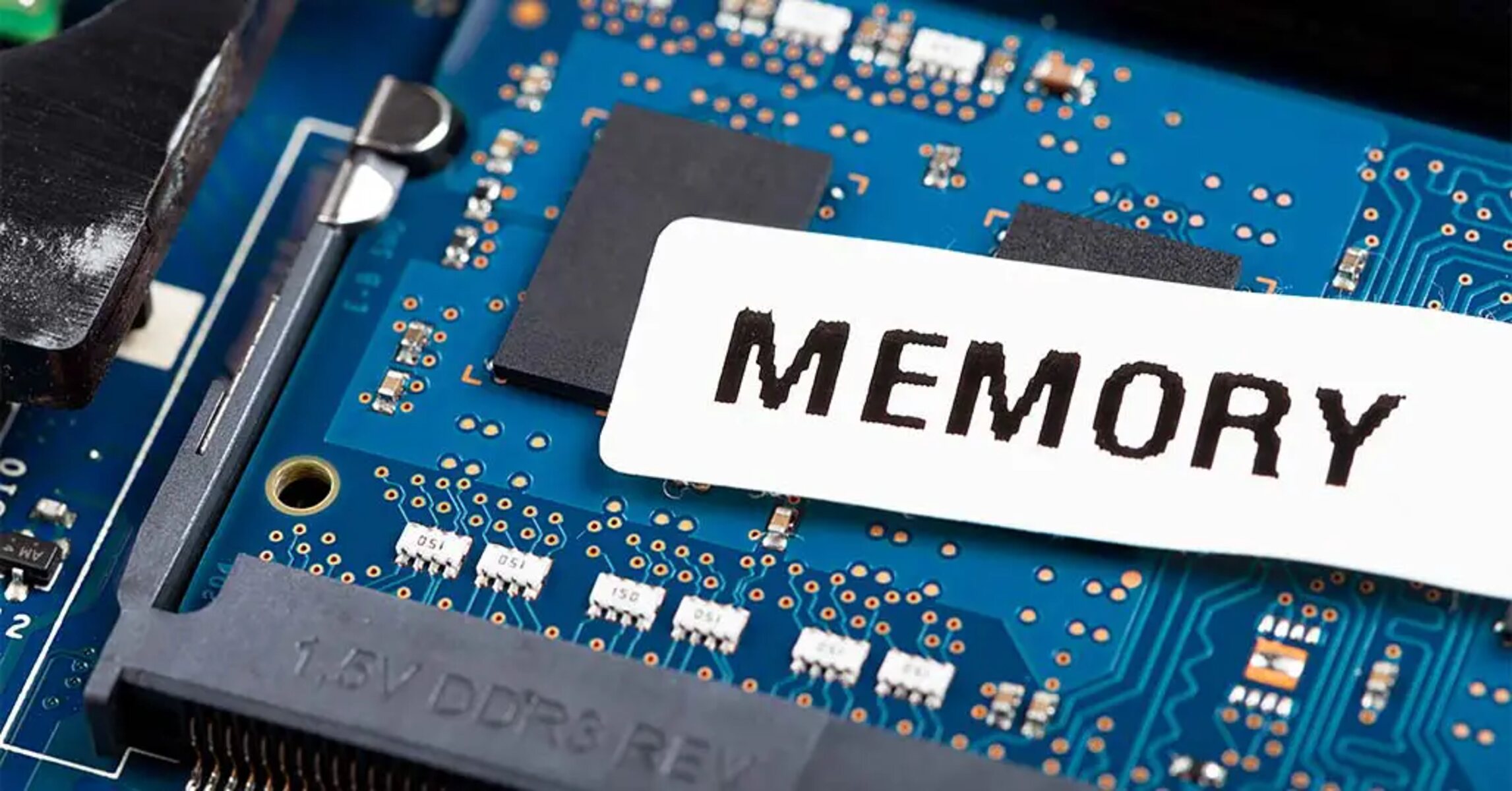Introduction
Video RAM, or VRAM, is a critical component in modern computer systems and plays a crucial role in graphics and video rendering. It is a type of memory specifically designed to store and manipulate visual data, allowing for smooth and high-quality image display on your monitor. From video games to professional video editing, VRAM is an essential part of delivering stunning visual experiences.
Video RAM operates in conjunction with the computer’s main system RAM, but its primary purpose is to handle the demanding requirements of graphics processing. It acts as a dedicated memory buffer for the video card, allowing it to quickly store and access the image data required for rendering on the screen. This specialized memory ensures smooth and real-time playback of videos, fluid gameplay, and responsive graphics performance.
Without proper allocation of VRAM, graphics-intensive applications would struggle to deliver the desired level of performance. Inadequate VRAM can lead to graphical glitches, low frame rates, and even system crashes in extreme cases. As technology continues to advance and graphic demands increase, having a sufficient amount of VRAM becomes even more critical.
Throughout this article, we will explore the intricacies of video RAM, its function, types, and its impact on gaming performance. We will also discuss the importance of VRAM in professional applications that require heavy graphics processing. Lastly, we will touch on methods to upgrade your video RAM to improve your system’s capabilities.
Definition of Video RAM
Video RAM, commonly known as VRAM, is a specialized form of memory dedicated to graphics processing within a computer system. It serves as a temporary storage buffer for visual data, allowing for fast and efficient rendering of images, videos, and other graphical content on a screen.
Unlike the system RAM, which serves as a general-purpose memory for the entire computer, VRAM is designed specifically for handling the demanding requirements of graphics-intensive applications. It provides a dedicated memory space for the graphics processing unit (GPU) to store and access image data, textures, and other graphical elements.
One of the key features of VRAM is its ability to simultaneously read and write data, which is essential for real-time rendering and smooth video playback. This feature allows the GPU to quickly access the necessary visual information and update it as needed to deliver seamless performance.
Another important aspect of VRAM is its high bandwidth capability, which refers to the speed at which data can be transferred between the GPU and the memory. This is crucial for handling large amounts of image and video data, especially in applications that require high-resolution graphics or multiple displays.
Video RAM is typically located on a separate chip on the graphics card or integrated into the GPU itself. It is characterized by its high-speed performance, low latency, and specialized architecture optimized for graphical processing tasks.
In summary, video RAM is a dedicated form of memory specifically tailored for handling the graphical processing requirements of a computer system. Its purpose is to store and manipulate visual data, enabling smooth and high-quality rendering of graphics, videos, and other visual content on a display.
How Video RAM Works
Video RAM (VRAM) operates in close coordination with the graphics processing unit (GPU) to handle the intensive task of rendering and displaying visual content on a computer screen. It follows a specific process to efficiently store and access graphical data, ensuring smooth and responsive graphics performance.
When the GPU receives instructions to render an image, it retrieves the necessary visual data from the system RAM and loads it into the VRAM. This data includes textures, shader programs, and other elements required for the rendering process. The GPU then performs various calculations and manipulations on this data to generate the final image.
One of the key advantages of video RAM is its dual-ported nature, which means it can perform simultaneous read and write operations. This allows the GPU to continuously fetch new image data while simultaneously updating the current frame being displayed on the screen. The ability to read and write in parallel ensures a smooth and uninterrupted visual experience.
Additionally, VRAM uses a specialized architecture that is optimized for high-speed data transfers. It incorporates multiple memory banks, each with its own access path to the GPU. This parallel access allows for faster retrieval and storage of information, reducing latency and improving overall performance.
Moreover, video RAM utilizes a concept known as caching to accelerate the rendering process. A cache is a small, high-speed memory buffer located within the VRAM. It stores frequently accessed image data, allowing the GPU to quickly access and retrieve commonly used textures or graphics elements without the need to fetch them from the system RAM. This caching mechanism significantly reduces latency and enhances rendering speed.
Overall, video RAM works in harmony with the GPU to efficiently manage the storage and retrieval of visual data during the rendering process. Its dual-ported nature, specialized architecture, and caching capabilities enable smooth and responsive graphics performance, ensuring that your favorite games and multimedia content are displayed flawlessly on your screen.
Video RAM Vs System RAM
While both video RAM (VRAM) and system RAM are forms of memory in a computer system, they serve distinct purposes and have different characteristics that are essential for their respective roles.
System RAM, also known as main memory or simply RAM, is a general-purpose memory that is used by the computer’s processor to store and retrieve data needed for the overall operation of the system. It holds the operating system, applications, and user data that are being actively used by the computer.
On the other hand, VRAM is specifically designed and optimized for graphics processing tasks, handling the intensive demands of rendering and displaying visual content on a screen. Its primary purpose is to store and manipulate the graphical data required for smooth and high-quality graphics performance.
One of the key differences between VRAM and system RAM is their bandwidth requirements. Graphics-intensive applications, such as video games or video editing software, demand high-speed access to large amounts of visual data. VRAM meets this requirement with its high bandwidth and specialized architecture, allowing for fast transfer of graphical information between the GPU and the memory.
Another distinction lies in the dual-ported nature of VRAM compared to the single-ported system RAM. VRAM can simultaneously read and write data, which is crucial for real-time rendering and rapid image updates on the screen. In contrast, system RAM is optimized for overall system performance and is not specifically designed to handle the high-speed data transfer demands of graphics processing.
The capacity of VRAM and system RAM also differs. System RAM typically has larger capacity, ranging from several gigabytes to even terabytes in high-end systems, as it needs to cater to the needs of the operating system and various applications running simultaneously. On the other hand, VRAM generally has a smaller capacity, typically ranging from a few hundred megabytes to a few gigabytes, as it is dedicated solely to graphics-related tasks.
While VRAM is crucial for graphics performance, it is important to note that it works in conjunction with system RAM. The GPU frequently accesses system RAM to retrieve non-graphical data, such as game textures, software resources, and other assets required for the rendering process.
In summary, system RAM and VRAM have different roles and characteristics. System RAM serves as general-purpose memory for overall system performance, while VRAM is specifically designed for graphics processing, providing high bandwidth, dual-port access, and optimized architecture to handle the demands of real-time rendering and display of visual content. Both types of memory are essential components in a computer system, working together to deliver a smooth and responsive user experience.
Types of Video RAM
There are various types of video RAM (VRAM) available that differ in their technology, performance, and memory architecture. Each type offers unique advantages and is designed to meet different graphics processing requirements. Let’s explore some of the most common types of VRAM:
-
Synchronous Graphics RAM (SGRAM): SGRAM is one of the earliest forms of VRAM and offers improved performance compared to conventional RAM. It employs a dual-ported architecture, allowing for simultaneous access to memory, which is essential for real-time rendering. SGRAM is commonly used in older graphics cards and is suitable for lower resolution displays.
-
Display Data Channel (DDC) RAM: DDC RAM is an enhanced version of SGRAM that provides additional features for faster data transfer and improved display quality. It includes separate read and write channels, allowing for simultaneous data access and updating of the display. DDC RAM performs well with moderate resolution displays and is commonly used in mid-range graphics cards.
-
Video RAM (VRAM): VRAM, which shares the same name as the general term for graphics memory, refers to a type of memory used in older graphics cards. It utilizes a dual-ported architecture with separate pathways for reading and writing data, providing fast access to graphical information. VRAM is ideal for older display technologies and lower-resolution graphics rendering.
-
GDDR5 (Graphics Double Data Rate 5): GDDR5 is a type of VRAM commonly found in modern graphics cards. It offers significant improvements in bandwidth and memory speed compared to previous generations. GDDR5 memory operates at higher clock frequencies, allowing for faster data transfers and better performance in high-resolution gaming and graphics-intensive applications.
-
GDDR6 (Graphics Double Data Rate 6): GDDR6 is the latest iteration of VRAM technology and provides even higher performance than GDDR5. It offers increased memory bandwidth, improved power efficiency, and higher capacities. GDDR6 is well-suited for demanding applications, including 4K gaming, virtual reality, and professional video editing.
When choosing a graphics card, understanding the type of VRAM it utilizes is crucial as it directly impacts the performance and capabilities of your system. The choice of VRAM depends on factors such as your display resolution, the complexity of the graphics applications you use, and your budget.
In summary, the types of video RAM available vary in their architecture, performance, and suitability for different graphics processing requirements. SGRAM, DDC RAM, VRAM, GDDR5, and GDDR6 are some of the commonly used types, each offering unique benefits and optimized performance for specific applications.
Importance of Video RAM in Gaming
Video RAM (VRAM) plays a critical role in gaming and directly impacts the performance and visual experience of gamers. This dedicated form of memory is specifically designed to handle the demanding requirements of graphics-intensive games, making it a vital component of any gaming system. Let’s explore the importance of VRAM in gaming:
Texture Loading and Rendering: VRAM stores the textures and other graphical assets required for rendering the game’s visuals. When playing a game, the GPU accesses these textures from VRAM to create the detailed, lifelike images you see on screen. Having sufficient VRAM allows for fast and efficient loading of textures, ensuring smooth gameplay and preventing texture popping or delayed rendering.
High-Resolution Gaming: Modern games often feature high-resolution graphics and realistic textures, which require large amounts of VRAM to accommodate. Higher VRAM capacity allows for smooth rendering of high-resolution textures without compromising on image quality. Insufficient VRAM can lead to lowered visual fidelity, stuttering, and frame rate drops, impacting the overall gaming experience.
Multi-Monitor and Surround Gaming: Gamers who use multiple monitors or engage in surround gaming setups require a significant amount of VRAM. This is because the graphics card needs to manage the rendering and display across multiple screens simultaneously. Having ample VRAM ensures smooth performance and prevents issues like screen tearing or lag during multi-monitor gaming.
Special Effects and Post-Processing: Many modern games utilize advanced graphical effects, such as dynamic lighting, shadows, reflections, and post-processing effects like motion blur or depth of field. These effects require additional VRAM to store and process the necessary data. With adequate VRAM, these effects can be rendered smoothly, enhancing immersion and visual quality.
Virtual Reality (VR) Gaming: VR gaming places even higher demands on system resources, including VRAM. The GPU needs to render separate images for each eye at a high frame rate to maintain a seamless VR experience. Insufficient VRAM can result in latency, motion sickness, and degraded visual quality in VR games.
In summary, video RAM is crucial for gaming as it directly affects the performance, visual quality, and overall experience of gamers. Sufficient VRAM allows for smooth loading and rendering of textures, enhances high-resolution gaming, supports multi-monitor setups, enables advanced graphical effects, and ensures optimal performance in virtual reality gaming. When building or upgrading a gaming system, it’s important to consider the amount and type of VRAM to meet the demands of the latest games and deliver an immersive gaming experience.
Upgrading Video RAM
Upgrading video RAM (VRAM) can be a viable option to improve the graphics performance and overall gaming experience on your computer. However, it’s essential to note that unlike system RAM upgrades, VRAM upgrades may not be directly possible for all systems due to the integrated nature of graphics cards. Nevertheless, here are some possibilities and considerations for upgrading VRAM:
External Graphics Amplifiers: Some gaming laptops and systems offer external graphics amplifiers that can be connected via Thunderbolt or USB ports. These devices provide additional graphics processing power, including VRAM, to enhance gaming performance. However, it’s important to ensure compatibility with your specific system before investing in an external graphics amplifier.
Upgrading Graphics Card: In many cases, VRAM upgrades are facilitated by upgrading the entire graphics card. Upgrading to a newer and more powerful graphics card with higher VRAM capacity can significantly enhance gaming performance. When considering a graphics card upgrade, it’s important to ensure compatibility with your system’s power supply and motherboard.
Check Software and Game Requirements: Before deciding to upgrade VRAM, it’s crucial to check the system requirements of the software or games you intend to run. Determine the minimum and recommended VRAM requirements for optimal performance. If your current VRAM meets or exceeds the recommended requirements, upgrading may not be necessary, and other performance factors should be considered instead.
Budget Considerations: Upgrading VRAM through a graphics card upgrade can be a significant investment. It’s essential to assess your budget and determine if upgrading VRAM is the most cost-effective solution for improving gaming performance. You may also need to consider other system components, such as the power supply, to support the upgraded graphics card.
Consider System Bottlenecks: Upgrading VRAM alone may not always guarantee a significant improvement in gaming performance. Other system components, such as the CPU, system RAM, and storage drive, can also impact overall gaming performance. Assess the entire system and identify potential bottlenecks before deciding on a VRAM upgrade.
Consult with a Professional: If you’re unsure about upgrading VRAM or need assistance in choosing the right graphics card, it’s recommended to consult with a knowledgeable professional or seek advice from reputable computer hardware forums or communities. They can provide valuable insights and help you make an informed decision.
In summary, upgrading VRAM can improve gaming performance, but it may involve upgrading the entire graphics card. Consider options such as external graphics amplifiers or upgrading the graphics card while keeping budget, compatibility, and system requirements in mind. Assessing the entire system for potential bottlenecks and seeking professional advice can ensure a successful VRAM upgrade, leading to an enhanced gaming experience.
Conclusion
Video RAM (VRAM) is a critical component in modern computer systems, particularly for gaming and graphics-intensive applications. It provides a dedicated memory buffer for the graphics processing unit (GPU), enabling smooth rendering and display of visual content on a screen.
In this article, we have explored the definition and significance of VRAM, its role in gaming, and the various types of VRAM available. We also discussed the importance of having sufficient VRAM for smooth gameplay, high-resolution graphics, multi-monitor setups, and advanced graphical effects.
While upgrading VRAM can lead to improved gaming performance, it’s important to consider compatibility, budget, and overall system requirements. Upgrading the graphics card or exploring options like external graphics amplifiers can be effective ways to increase VRAM capacity.
Furthermore, it’s crucial to assess the entire system for potential bottlenecks and consider the impact of other components like the CPU, system RAM, and storage drive on gaming performance.
In conclusion, adequate video RAM is essential for optimal graphics performance, and upgrading VRAM can be a viable option to enhance gaming experiences. Whether through upgrading the graphics card or exploring external graphics amplifiers, careful consideration of compatibility, system requirements, and budget is necessary to make an informed decision. By understanding the importance of video RAM and its impact on gaming, you can optimize your system’s capabilities and enjoy immersive, visually stunning gameplay.







